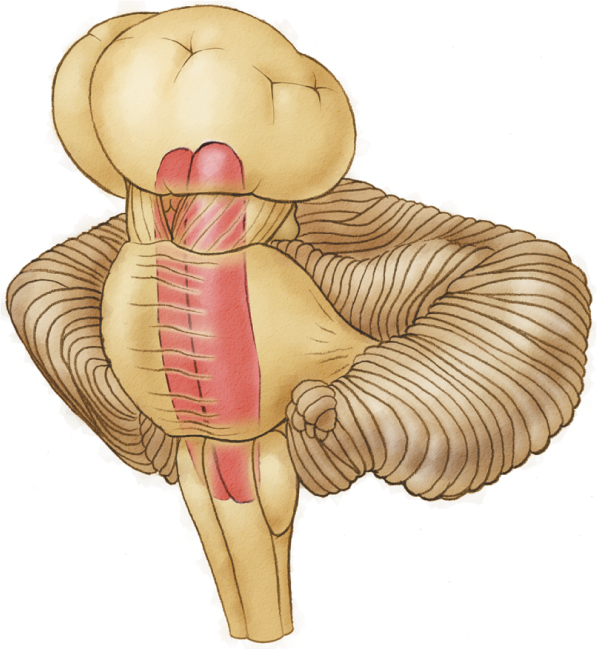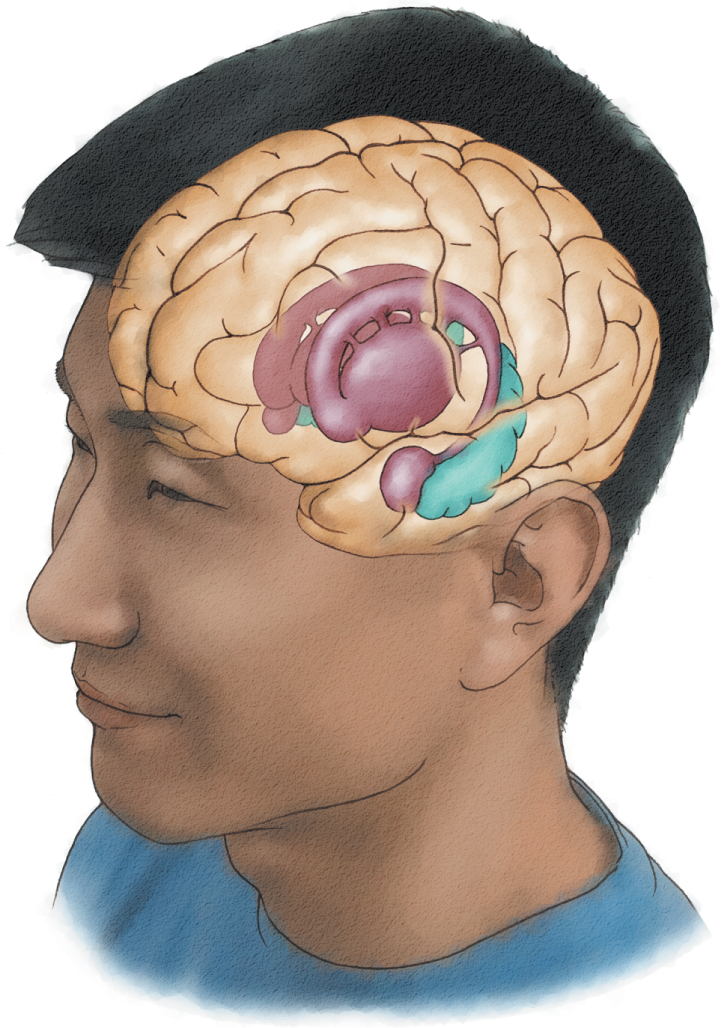Anatomy of the Brain
By:
Anatomy of the Brain
By:
The human brain is composed of several major components, each containing numerous smaller structures. What role do these various structures play in producing behavior? This activity will help familiarize you with the names and functions of prominent areas of the hindbrain and midbrain, which are both part of the brainstem, and the forebrain, which sits on top.
After completing this activity, you should be able to:
This activity relates to the following principles of nervous system function:
The brainstem, which includes the hindbrain and midbrain, begins where the spinal cord enters the skull. It receives afferent signals from the body so that a sensory world can be constructed and sends efferent signals out to direct movement.
Rotate the figure (by either moving the image with your mouse/touchpad or using the arrow buttons) to view the hindbrain from various perspectives and to learn more about the hindbrain and its components.
Rotate the figure to view the hindbrain from various perspectivesand to learn more about the hindbrain and its componentsFor rotation model use buttons or keys: left, right, top, bottom
Before proceeding, check your knowledge of the hindbrain structures by matching the colored circle on the drawing with the appropriate term.
Note: you must choose all correct answers before proceeding.

The midbrain is another major brainstem component that is located superior to the pons and inferior to the diencephalon. The midbrain is composed of two main structures, the tectum and the tegmentum, which together process sensory information and facilitate movement related to it, called orienting movement.
The diencephalon integrates and relays sensory and motor information to the cerebral cortex. Two of its principle structures are the thalamus and hypothalamus.
Explore the diencephalon and midbrain, as well as their components. Rotate the figure (by either moving the image with your mouse/touchpad or using the arrow buttons) to view the midbrain from various perspectives.
Explore the diencephalon and midbrain, as well as their components.Click and drag the image to rotate and view the midbrain from various perspectives.For rotation model use buttons or keys: left, right, top, bottom
Distinct nuclei within the tegmentum serve a variety of important functions, from the initiation and control of movement to the processing of pain information. Let’s look more closely at these nuclei.
Let’s learn about each component of the tegmentum.
Test your knowledge of the midbrain by matching each structure to the corresponding feature or function. You will have three attempts to correctly match all items.
The forebrain sits on top of and surrounds the brainstem and is the largest region of the mammalian brain. It includes two principle structures: the cerebral cortex, made up of the allocortex and neocortex, and the basal ganglia.
Now, we’ll explore each component of the forebrain. First, explore the neocortex, allocortex, and basal ganglia, and then use the Next button to view some of the structures within each of these regions. You must explore all of the regions before you move on.
Rotate the figure (by either moving the image with your mouse/touchpad or using the arrow buttons) to view the forebrain from various perspectives and learn more about the forebrain components.
Now well explore each component of the forebrainFor rotation model use buttons or keys: left, right, top, bottom
Now well explore each component of the forebrainFor rotation model use buttons or keys: left, right, top, bottom
Before proceeding, let's check your knowledge of the forebrain structures by matching the colored circle in the drawing with the correct term.

Congratulations! You have successfully completed this activity on brain anatomy. In this activity, you reviewed the names and functions of prominent areas of the hindbrain, midbrain, and forebrain.
Your instructor may now have you take a short quiz about this activity. Good luck!